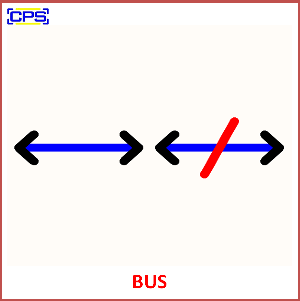A bus in electrical or computer systems refers to a communication pathway that transfers data, signals, or power between components within a system. It acts as a shared medium that interconnects multiple devices or subsystems, enabling them to exchange information.

Key Types and Features of a Bus:
1. Electrical Power Bus:
- A conductor or set of conductors (e.g., busbars) that distribute electrical power within a system.
- Commonly used in power distribution systems and substations.
2. Data Bus (in Computer Systems):
- Definition: A system of pathways (wires, tracks, or optical connections) that carry data between components such as the CPU, memory, and peripherals.
- Features:
- Address Bus: Transfers memory addresses from the CPU to other components.
- Data Bus: Carries the actual data between devices.
- Control Bus: Sends control signals to manage operations.
- Examples: PCI, USB, I2C, and CAN bus.
Characteristics of a Bus:
- Shared Medium: Multiple devices can use the bus for communication, typically one at a time.
- Parallel or Serial: Buses can transmit data in parallel (multiple bits at once) or serially (one bit at a time).
- Speed and Bandwidth: Defined by the data transfer rate and the amount of data it can handle simultaneously.
Applications:
- Power distribution in electrical systems.
- Communication in computer architectures.
- Automotive systems (e.g., CAN bus for vehicle control networks).
- Industrial automation and embedded systems.
The concept of a bus simplifies system design by reducing the need for direct connections between individual components.
